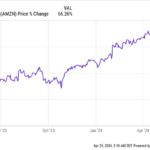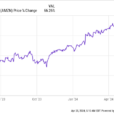
SEO best practices are going to change whether we like it or not. It’s easy to get set in your ways and feel comfortable with your current strategy, but this isn’t going to be sustainable in this industry. It’s important that marketers focus on getting out of their old way of thinking and evolve along with Google and the other search engines in order to find long-term success.
Fortunately, understanding this “new age” of SEO isn’t as time-consuming or overwhelming as it may sound, so the sooner you can get started the better and easier changing your mindset will be in the future.
How SEO is evolving in 2015
Understanding how you can evolve your strategy as the search engines evolve starts with recognizing how it’s all changing in the first place. A great way to do this is by compartmentalizing different SEO tasks and methods and then looking at what was recommended in the past versus what is recommended by search engines now, in the present.
QuickSprout published an excellent infographic, which you can find here, that outlined old SEO versus new SEO. Consider a few of the shifts in the industry QuickSprout pointed out as well as a few of our own below:
1. The SEO mindset
Past: In the past, the goal was to focus on keywords and get rankings on the SERPs. Some thought how you got there wasn’t quite as important as grabbing (and keeping) that spot on page one.
Present: Marketers should focus more on a brand’s reputation, how people engage with that brand, and the quality of the product/service. In the end putting a focus on this should improve your rankings by increasing shares and natural linking across the web, but ultimately the focus needs to be on how your brand is viewed as opposed to its ranking position.
Keyword mentality
Past: Piggybacking off of the SEO mentality of the past, marketers would focus on one major keyword. They would research to find a keyword where they wanted to rank, and then focus on that term and that term alone.
Present: It is now all about what the searcher is typing into the search engine (think intent i.e. semantic SEO). You want to focus on keyword intent and long tail searches. This is where semantic SEO comes into play and getting creative with search queries becomes more important.
Content approach
Past: Content was always supposed to be written for readers, but that doesn’t mean that’s actually what marketers were doing. In the past the focus was on writing content that would rank well on a SERP– using the right and appropriate amount of keywords.
Present: Thanks to the Panda algorithm, marketers learned quickly that content needs to be written for readers first, as it always should have been. Content now focuses on relevance and engaging the audience.
Link building best practices
Past: Much like the content section discussed above, marketers knew that link building was supposed to follow white hat rules, but that advice was widely ignored. It was all about fitting in keyword rich links wherever possible and on as many websites as possible. The more variety, the better, so this often included placing links on directories and forums.
Present: Links nowadays must be earned. Today it’s more important to build relationships and build links from relevant and authoritative sources. This does not mean that directories, forums, and other link building tactics are not longer an accepted practice, it just means that marketers need to be much more selective.
Read more: The New Age of SEO: Why Your Approach Must Change
















